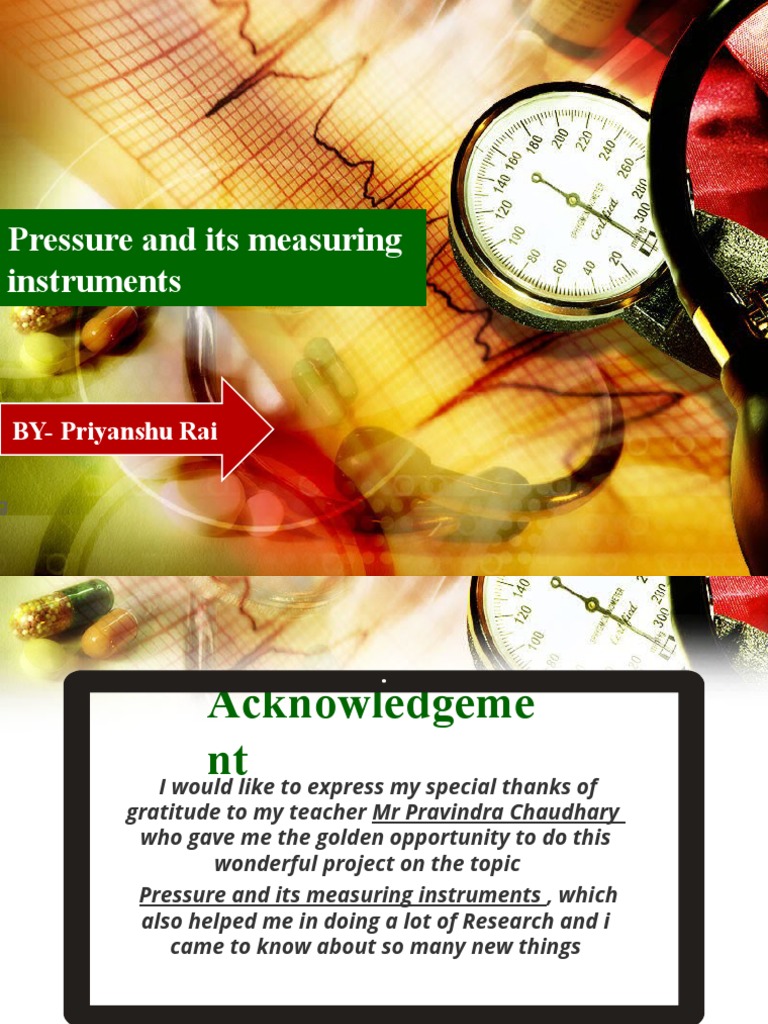Measuring instruments for pressure are integral to various scientific and industrial applications, providing crucial data for researchers, engineers, and technicians. Pressure, defined as the force exerted per unit area, is a fundamental parameter that influences multiple physical phenomena. The measurement of pressure can facilitate the understanding of fluid dynamics, structural integrity, and thermodynamic processes among other disciplines. As such, this article delineates the diverse array of pressure measuring instruments, highlighting their principles of operation, applications, and distinct characteristics.
The most fundamental categories of pressure measuring devices are manometers, pressure gauges, transducers, and digital sensors. Each type holds unique advantages and best suits particular applications, making understanding their functions and uses quintessential for professionals in the field.
1. Manometers
Manometers are among the oldest and simplest devices used for pressure measurement. They utilize a liquid column to indicate pressure levels via the height differential between two points, hence relying on hydrostatic principles. Typically filled with mercury or water, manometers can classify into two major types: open and closed manometers.
Open manometers measure the pressure with respect to atmospheric pressure, being ideal for applications where atmospheric pressure variations are negligible. In contrast, closed manometers, like U-tube manometers, measure gauge pressure, indicating pressure relative to a vacuum. Manometers are precise but can be cumbersome for high-pressure measurements, making their application confined mostly to laboratory settings and educational demonstrations.
2. Bourdon Tube Gauges
Bourdon tube gauges are a prevalent choice for industrial pressure measurement due to their robustness and ease of use. These gauges operate on the principle of mechanical deformation; a coiled tube, which is elliptical in cross-section, straightens under pressure. As pressure increases, the degree of deformation indicates the pressure level on a dial. The Bourdon tube is typically made of brass or stainless steel, ensuring durability in harsh environments.
Commonly used in pipelines, hydraulic systems, and pneumatic processes, Bourdon gauges are capable of measuring various pressure ranges, translating mechanical motion into readable output. However, they may exhibit hysteresis and inaccuracies at extreme pressure levels, necessitating regular calibration.
3. Diaphragm Pressure Gauges
Diaphragm pressure gauges operate based on the deflection of a flexible diaphragm in response to pressure changes. These gauges are particularly well-suited for low-to-medium pressure measurements and are often employed in sanitary applications, such as food and pharmaceutical industries, due to their cleanability and ability to prevent contamination.
The deflected diaphragm connects to a mechanical or electronic converting element that translates the deflection into a readable pressure value. Although diaphragm gauges provide accurate readings, they can exhibit a degree of non-linearity; hence, selecting the appropriate diaphragm material based on the medium’s properties is essential to eliminate measurement errors.
4. Pressure Transducers
Pressure transducers represent a technological advancement in pressure measurement, converting pressure into an electrical signal for enhanced accuracy and ease of data logging. These devices utilize various sensing elements such as piezoelectric, capacitive, or strain gauge technologies for diverse applications spanning aviation, automotive, and chemical processing sectors.
Piezoelectric transducers, for instance, generate a voltage in response to applied pressure, making them apt for dynamic pressure measurements in rapid processes. Meanwhile, capacitive transducers rely on changes in capacitance due to diaphragm displacement. Both offer improved sensitivity and are integral for integrating pressure measurement into automated systems, enabling real-time monitoring and control.
5. Digital Pressure Sensors
The recent surge in digital technology has facilitated the development of digital pressure sensors that combine traditional measurement principles with modern electronic innovations. These devices use microprocessors to simplify reading displays and connectivity to networked systems, making them invaluable for smart technologies.
Digital sensors generally provide high accuracy, wide measurement ranges, and the ability to store historical data. Their application ranges from manufacturing processes to environmental monitoring, where precision in controlling pressure can significantly affect system performance and safety.
6. Types of Pressure Measurement: Absolute, Gauge, and Differential
Understanding the types of pressure measurement is crucial as it determines the selection of the appropriate instrument. Absolute pressure measurement references a perfect vacuum, providing a baseline that is critical in applications such as vacuum systems, altimetry, and scientific research.
Gauge pressure measurement, as previously described, references atmospheric pressure. This measurement is prevalent in calibrating systems where pressure variations relative to surroundings are significant, such as in HVAC systems and automotive applications.
Differential pressure measurement determines the difference in pressure between two points, crucial in filtration applications and flow measurement. Instruments, such as differential pressure transmitters and manometers, facilitate this measurement, allowing engineers to assess system functionality and integrity with precision.
7. Conclusion
In summation, measuring instruments for pressure are pivotal in various sectors, serving to underpin scientific research, industrial procedures, and safety measures. As technology advances, the sophistication and capabilities of these instruments augment, providing more robust solutions tailored to meet the demands of increasingly complex systems. Understanding the intricacies of each type of measuring device establishes a strong foundation for developing precise and effective pressure monitoring methodologies.










